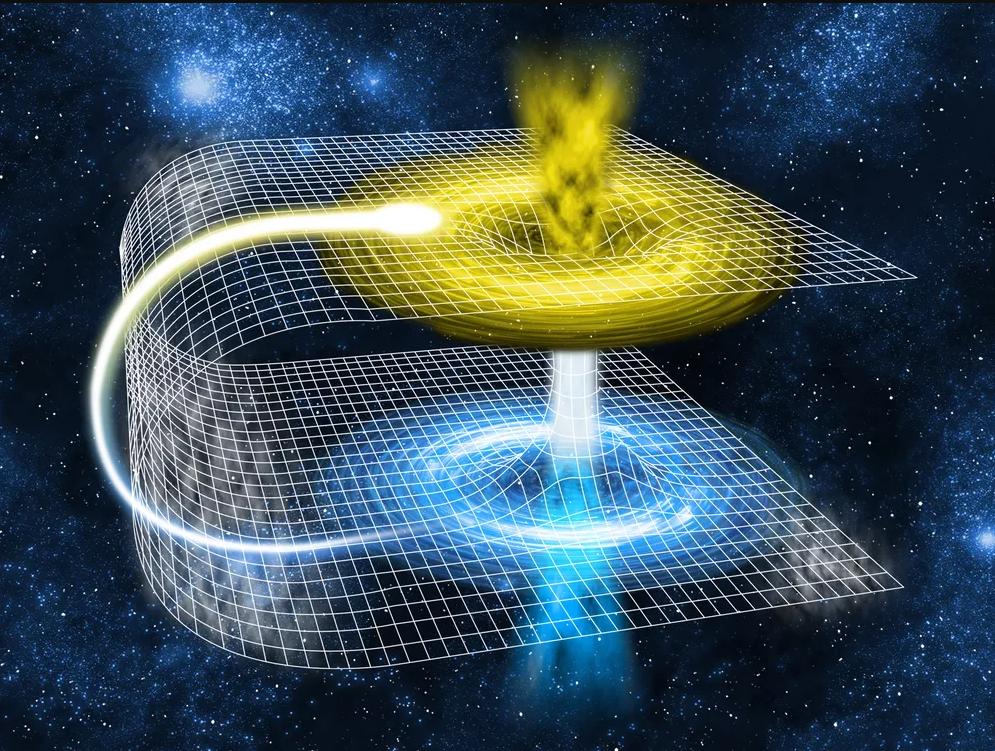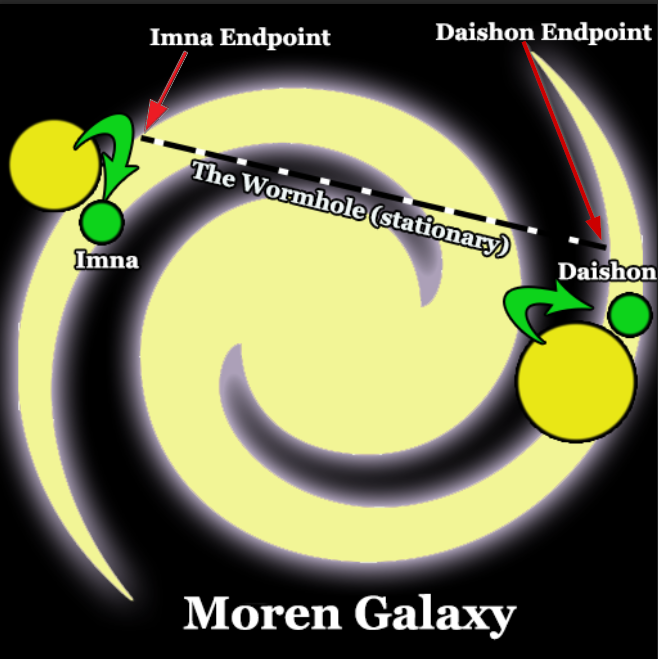Scribes’ Descent starts off with eight-year-old Mallory on Planet Imna, then jumps ahead in time to show eighteen-year-old Mallory on Planet Daishon. These planets lie on opposite sides of the Moren galaxy, and yet Mallory makes the trip in only three months. This is possible because a wormhole forms a shortcut by joining two points that lie on a sharply curved plane of spacetime. It would look something like this, where the folded plane holds the entire galaxy:

–http://www.shutterstock.com/gallery-138187p1.html
And below is a diagram showing a flat view (imagine the plane unfolded):

Not drawn to scale
For spacecraft and comm signals to travel between Imna and Daishon, they must traverse three segments:
1. From Imna to the Imnan side of the wormhole: about 50 million km
2. Through the length of the wormhole: 20 million km
3. From the Daishoni side of the wormhole to Daishon: about 50 million km
The total average distance is about 120 million km. The exact distance depends on where Imna and Daishon are in their orbit around their respective stars. When Imna lies on the wormhole side of Imna’s star, Daishon lies on the opposite side of its star from the wormhole, and vice versa. And because comm signals cannot pass through planets and stars, they must be tight-beamed across a series of relay satellites to reach the wormhole entrance. (At least this was needed before namiron comms were invented, but we’ll save that technology for a different newsletter)
How long does it take for a comm signal to travel between worlds? Here’s the math:
Light travels at 300,000 km per second
Average distance is 120 million km
Divide distance by speed to get time:

–https://www.calculatorsoup.com/calculators/math/speed-distance-time-calculator.php
=> time is just under 7 minutes.
Of course, this delay prevents natural video and phone conversations. That’s why most communication tends to be in text format, or recorded as short audio/video segments to be exchanged in a telegram-style. For the Spacenet (the internet that Daishon and Imna share using comm signals through the wormhole), all websites hosted on Imna’s webservers duplicate their contents on webservers located on Daishon. In this way, web visitors need not wait 7 whole minutes between page loads. Dynamic webpage content will still be at least 7 minutes old, because each data update must make the trip. Some websites only sync up data across the wormhole once a day when stale data is acceptable.
Spacecraft follow the same path as comm signals. And while interstellar travel sounds like a monumental feat, a nearby wormhole reduces the problem to a short spaceflight. We could make this trip with today’s chemical rockets. For reference, Earth and Mars are only 56 million km apart at their closest approach. This doesn’t require warp drives or hyperdrives.
That said, by the year 8326AS, Imna and Daishon enjoy superior tech that makes space travel safe and affordable for all. They launch craft from orbital rings without rockets and use faster engines. And the trip is safer because thick radiation shields encase the hull. (Trains that climb from the planetary surface to the orbital rings can easily haul shielding materials into low orbit, where their spacecraft are mass produced and assembled.)
Have questions about how this works? Reply and let me know.
See you next month!
Dylan West
